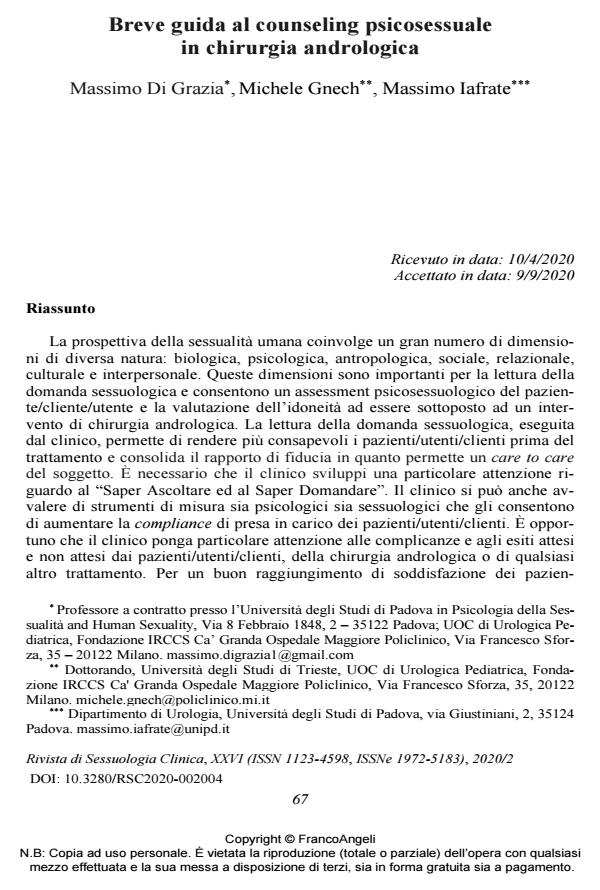Short guide to psychosexual counseling for andrological surgery
Journal title RIVISTA DI SESSUOLOGIA CLINICA
Author/s Massimo Di Grazia, Michele Gnech, Massimo Iafrate
Publishing Year 2020 Issue 2020/2
Language Italian Pages 16 P. 67-82 File size 262 KB
DOI 10.3280/RSC2020-002004
DOI is like a bar code for intellectual property: to have more infomation
click here
Below, you can see the article first page
If you want to buy this article in PDF format, you can do it, following the instructions to buy download credits

FrancoAngeli is member of Publishers International Linking Association, Inc (PILA), a not-for-profit association which run the CrossRef service enabling links to and from online scholarly content.
The perspective of human sexuality includes many different dimensions which have diverse natures: biological, psychological, anthropological, social, relational, cultural and interpersonal. These dimensions are very important for diagnosing sexual problems, giving psychosexual assessment and valuating the eligibility for andrological surgery. The clinical specialist carries out a sexual diagnosis which gives patients/clients more awareness before their treatments and consolidates the relationship of trust allowing for a care to care situation for the subject. The clini-cian must keep in mind two aspects: "Knowing how to listen, and "Knowing how to ask". The clinician may use psychological or sexological tests which are useful for boosting the patient’s/client’s compliance for treatment. It’s necessary that the specialist pay close attention to the complications and expected results as well as the results which would be, unexpected from patients/clients from andrological surgery or treatment. In order to bring satisfaction to the patient/client it is im-portant that clinician keeps both the vital meaning and affective recontextualization of the patient/client as a part of the medical treatment, surgery or psychosex-ual therapy. The best therapeutic results are obtained from a plural-dimensional and plural-disciplinary approach because sexology is not an autonomous science but is influenced by many other disciplines.
Keywords: Psychosexual counseling, andrological surgery, human sexuality.
Massimo Di Grazia, Michele Gnech, Massimo Iafrate, Breve guida al counseling psicosessuale in chirurgia andrologica in "RIVISTA DI SESSUOLOGIA CLINICA" 2/2020, pp 67-82, DOI: 10.3280/RSC2020-002004